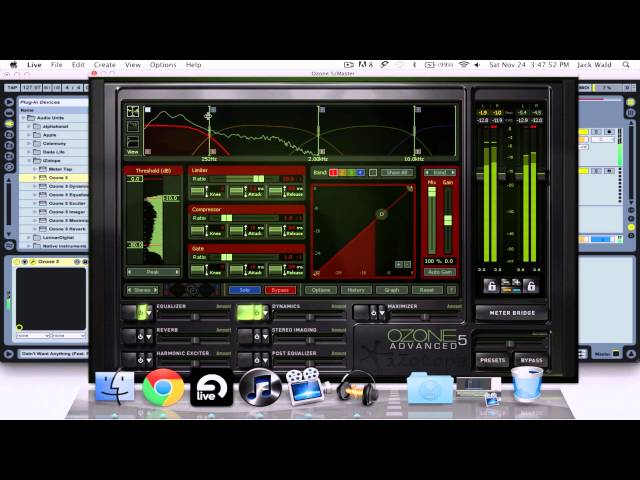
There are also numerous dithering options. It's one of the best we've tried, and is easily up there with PSP Xenon and Voxengo Elephant 3. In addition to the pre-existing Soft, Brickwall and Intelligent modes comes the even smarter Intelligent II, and boy, does it do a good job of producing loud yet coherent masters! The Loudness Maximizer keeps it simple, with just threshold, ceiling and timing sliders. Multiband Dynamics is an extremely versatile multiband compressor/limiter/expander/gate with automatic gain compensation and a new Mix control that gives you instant access to parallel compression. While you might think dynamics and limiting processors have been done to death, Ozone 4's stand out with their fantastic sound, clever functions and intuitive operation. Meanwhile, the Stereo Imager performs band-specific widening/narrowing of the stereo field - nice! Dynamics and limiting


The latter is new for v4 and is perhaps the cleanest and roundest-sounding. Four saturation modes are available: Tape, Tube, Retro and Warm. The four-band Harmonic Exciter adds saturation per band, complete with drive and mix controls, and there are time offset controls for subtly tightening the bass. Common to all is a handy Learn mode that automatically sets the crossover points to suit the frequency content of the incoming material. Ozone 4 contains three multiband processors (adjustable from one to four bands), and these now have numerous extra features. However, that's not always an option, and Ozone's reverb can work wonders on dry mixes, especially using the mid/side modes.

Ozone's so-called Mastering Reverb has always been a contentious inclusion, as it's generally considered that if you're adding reverb during mastering, you should really consider remixing. However, you can also select multiple EQ nodes and adjust them as one, which makes up for it. It works well in practice, although the associated snapshot menu obscures the EQ display, which can be annoying (this happens quite a lot with Ozone's pop-up windows). The latter enables you to capture 'spectrum snapshots' of other mixes in order to apply their tonal characteristics to your own. This has eight bands, operable in Analog, Digital (ie, linear phase) or Matching modes. You'll usually place Ozone's Paragraphic EQ module first in your mastering chain.


 0 kommentar(er)
0 kommentar(er)
